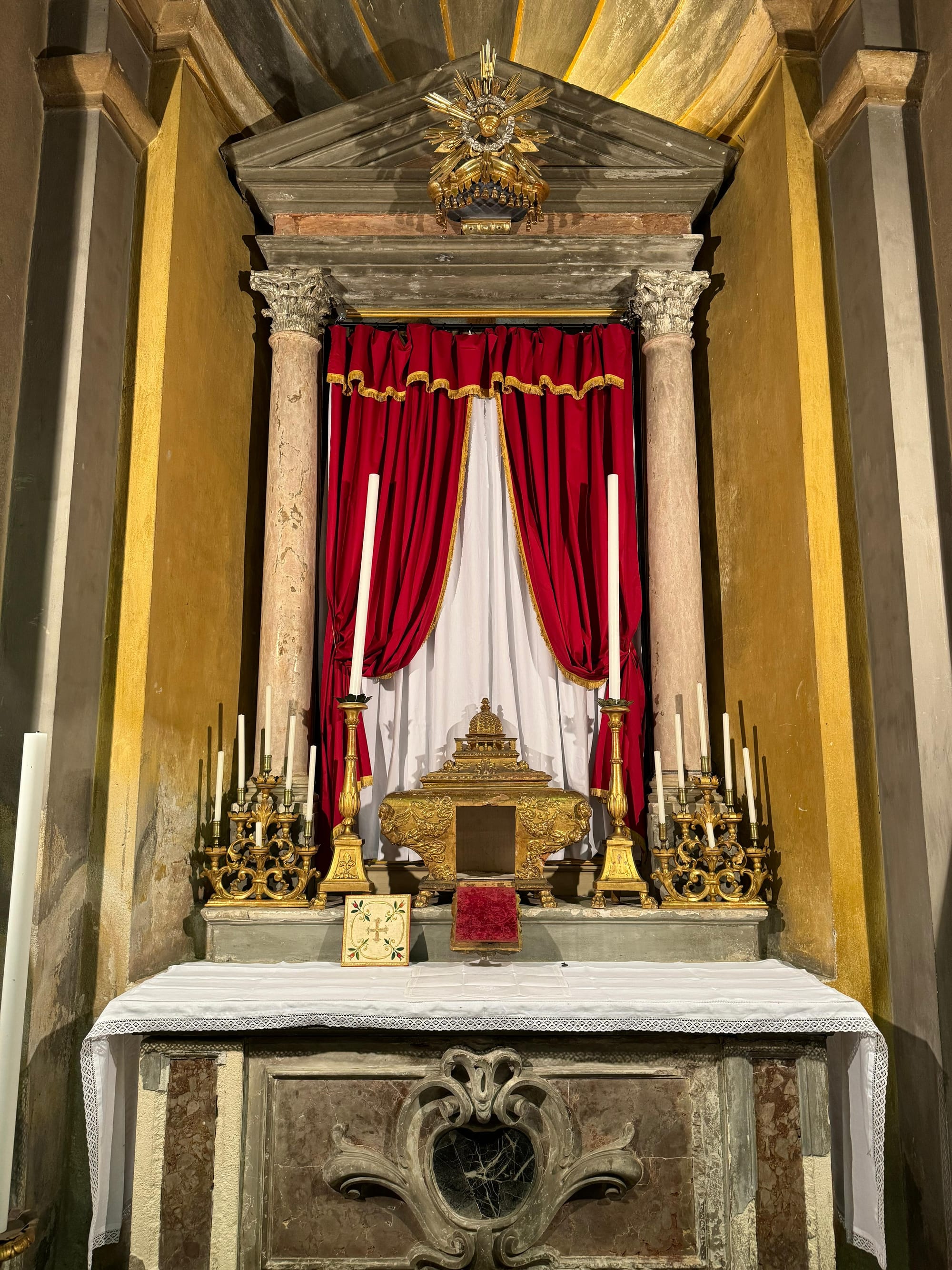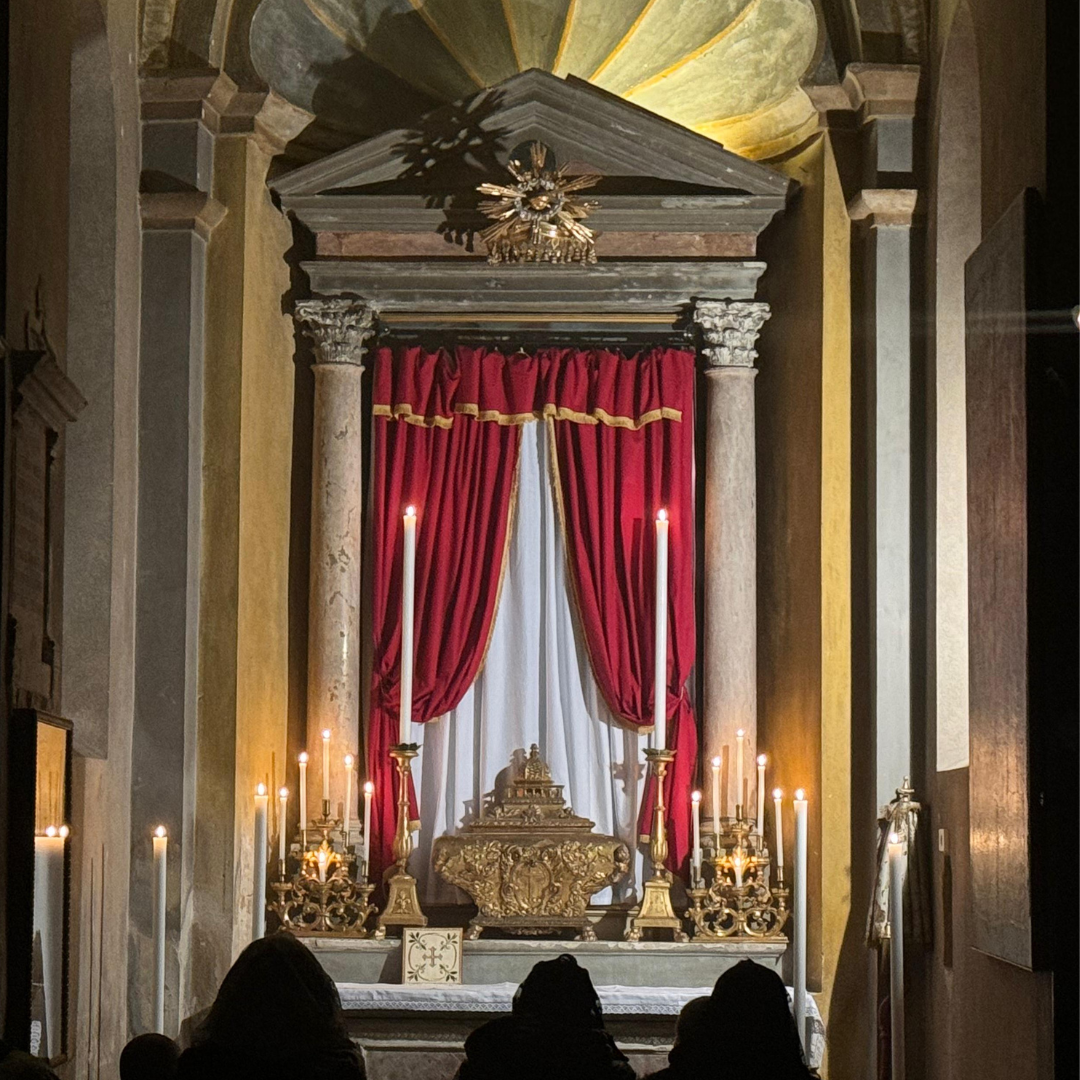The Altar of Repose is commonplace in the minds of the faithful who attend the Holy Triduum liturgies of Holy Thursday, Good Friday, and Easter Vigil.
These three days of the liturgical year consist of one grand liturgical action commemorating the final hours of the life of Our Lord Jesus Christ upon the earth: from the commemoration of the Last Supper and the Institution of the Eucharist, through Christ’s suffering in the Garden of Gethsemane, and subsequently his arrest, his scourging, his being condemned to death, carrying the cross, and finally being crucified upon Calvary, dying, and, most importantly, rising from the dead in his resurrection.
The Mass of the Lord’s Supper celebrated throughout the world in parish churches on the evening of Holy Thursday, ends with a solemn procession of the Eucharist to an altar other than the main altar in the church.

In some places, traditions remain, which maintain a very elaborate procession to honor the Blessed Sacrament: a canopy is used with faithful or confraternity members carrying it, altar servers carry candles, and thurifers carry incense to honor the Eucharist.
A procession is then made to the Altar of Repose while the famous hymn composed by Saint Thomas Aquinas after the Eucharistic Miracle which brought about the Feast of Corpus Christi is sung: Pange Lingua.
The last two verses beginning Tantum Ergo are best known for their use throughout the year in Adoration and Benediction of the Blessed Sacrament.
The homily by Pope Saint John Paul II for this liturgical celebration from 2001 helps us to understand the spirit and purpose of the Altar of Repose in light of the hymn we sing on this night.
He said:
“‘On the night of that Last Supper, seated with his chosen band, then as food for his apostles, gives himself with his own hand.’ With these words, the moving hymn ‘Pange Lingua’ presents the Last Supper, at which Jesus left us the marvelous Sacrament of his Body and Blood. [St. Paul’s] message is clear: the community that celebrates the Lord’s Supper makes his Passover present. The Eucharist is not simply the memorial of a past rite but the living representation of the Savior’s supreme gesture. From this experience the Christian community cannot but be moved to become the prophetic voice of the new creation inaugurated at Easter. Contemplating this evening the mystery of love that the Last Supper puts before us once again, we too remain in absorbed and silent adoration.”
The faithful, in this spirit, approach the Altar of Repose in their own churches or on a pilgrimage to other churches for the sake of silent adoration.
One popular tradition is to visit seven churches and their Altars of Repose. This number seven is significant for a few reasons.
First, it is the number of perfection, a theme that runs throughout the tradition of Sacred Scripture.
Second, there is a pilgrimage in Rome called the Seven Church Pilgrimage, devised by St. Philip Neri, in order to visit the most principal churches of Rome.
These churches house some of the most important relics from the life of Jesus, brought to Rome by the mother of Emperor Constantine, Saint Helen. In going to each church, different moments from the life of Christ are remembered. In imitation of this tradition, seven churches are visited to recall the life of Christ or the various events of his passion, death, and resurrection.
Third, some might visit five churches to recall the wounds of Christ in his crucifixion and others might visit seven churches to recall the seven sorrows of Mary, the Mother of Christ.
Historically, the Altar of Repose was called a “sepulcher,” and it is still commonly known by this name in Italy. But, a distinction is made.
In one way, in our visit to an Altar of Repose, we are making the prayerful commemoration of a visit to the sepulcher, or tomb, of Christ, in order to recall the event of Christ being laid in the tomb.
In another way, more importantly, we visit the risen and living Eucharistic Presence of Christ reserved in the Altar of Repose. For this reason, the term “sepulcher” fell out of use to not associate death with the theological truth that Christ is alive and risen and that’s whom we encounter in the Eucharist.
The liturgical commemoration of the Mass of the Lord’s Supper and the decoration of the sepulcher and solemn procession to the same give rise in the hearts of the faithful a greater love for Christ in his passion, a greater devotion to the gift of the Eucharist, and an opportunity to grow in silent adoration in the darkness of the days of the Holy Triduum.


